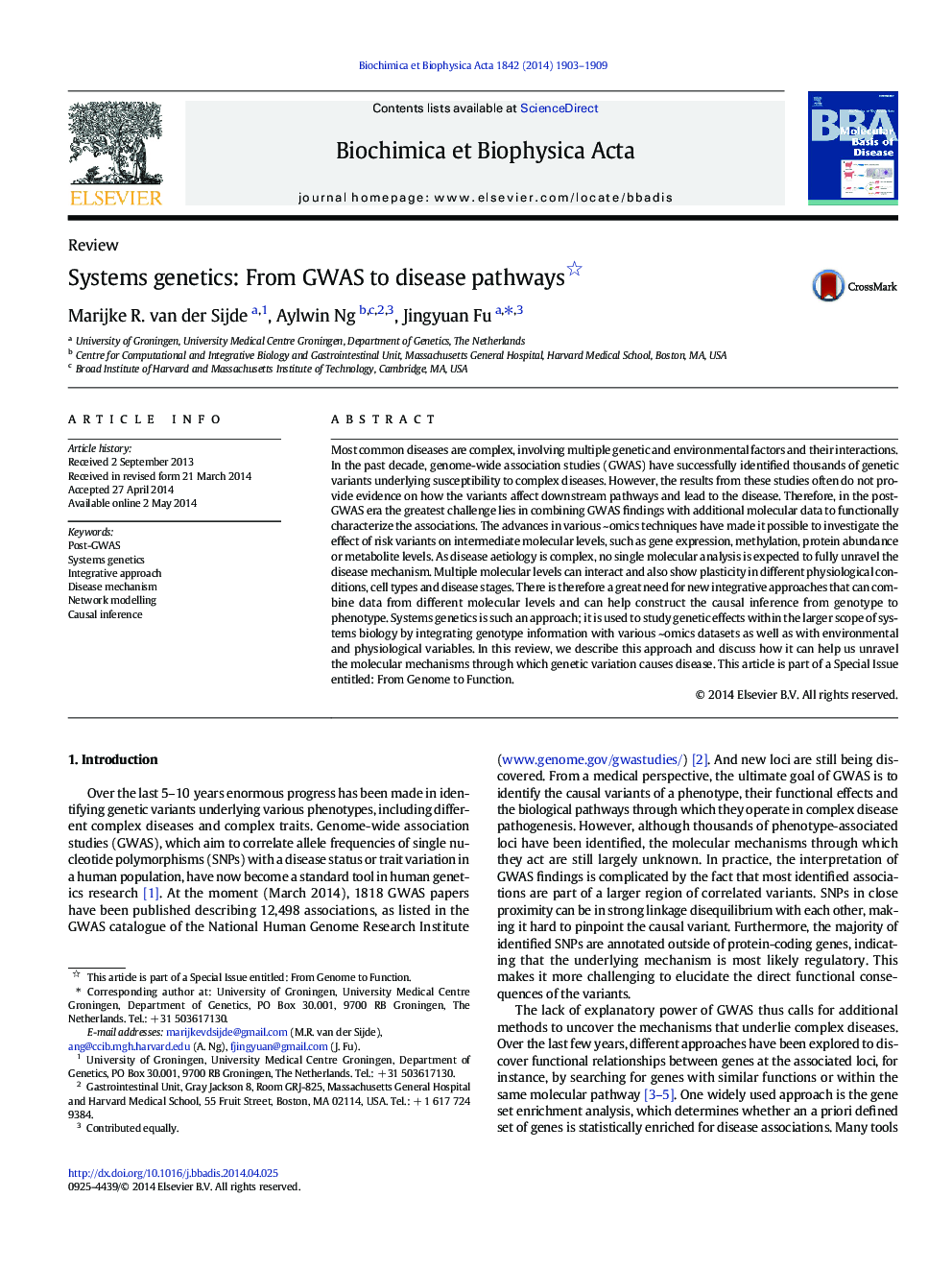| Article ID | Journal | Published Year | Pages | File Type |
|---|---|---|---|---|
| 1904693 | Biochimica et Biophysica Acta (BBA) - Molecular Basis of Disease | 2014 | 7 Pages |
•GWAS have identified thousands of genetic loci that underlie disease susceptibility.•Genetic loci enforce their risk to the phenotype via intermediate molecular traits.•Genetic effects can be dynamic and depend on cell- or tissue types and environment.•Systems genetics studies genetic effects within the broad scope of systems biology.•Systems genetics help us move from disease risk loci to disease aetiology.
Most common diseases are complex, involving multiple genetic and environmental factors and their interactions. In the past decade, genome-wide association studies (GWAS) have successfully identified thousands of genetic variants underlying susceptibility to complex diseases. However, the results from these studies often do not provide evidence on how the variants affect downstream pathways and lead to the disease. Therefore, in the post-GWAS era the greatest challenge lies in combining GWAS findings with additional molecular data to functionally characterize the associations. The advances in various ~omics techniques have made it possible to investigate the effect of risk variants on intermediate molecular levels, such as gene expression, methylation, protein abundance or metabolite levels. As disease aetiology is complex, no single molecular analysis is expected to fully unravel the disease mechanism. Multiple molecular levels can interact and also show plasticity in different physiological conditions, cell types and disease stages. There is therefore a great need for new integrative approaches that can combine data from different molecular levels and can help construct the causal inference from genotype to phenotype. Systems genetics is such an approach; it is used to study genetic effects within the larger scope of systems biology by integrating genotype information with various ~omics datasets as well as with environmental and physiological variables. In this review, we describe this approach and discuss how it can help us unravel the molecular mechanisms through which genetic variation causes disease. This article is part of a Special Issue entitled: From Genome to Function.
